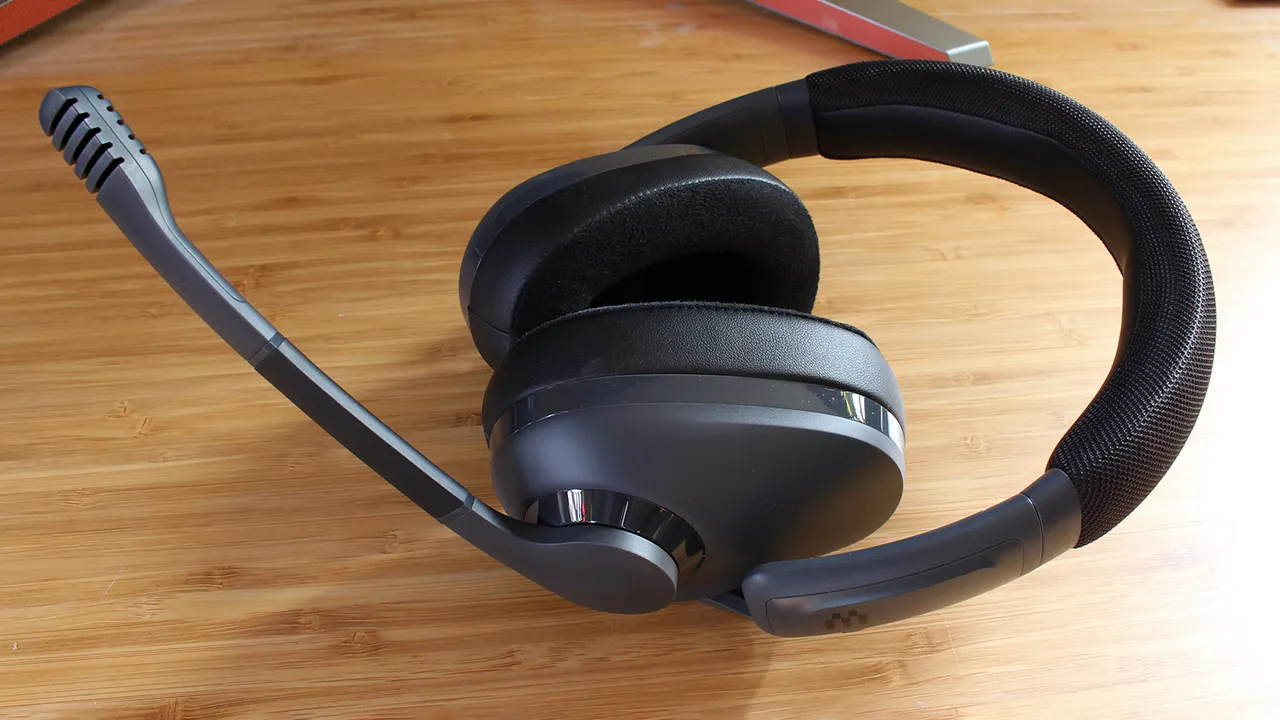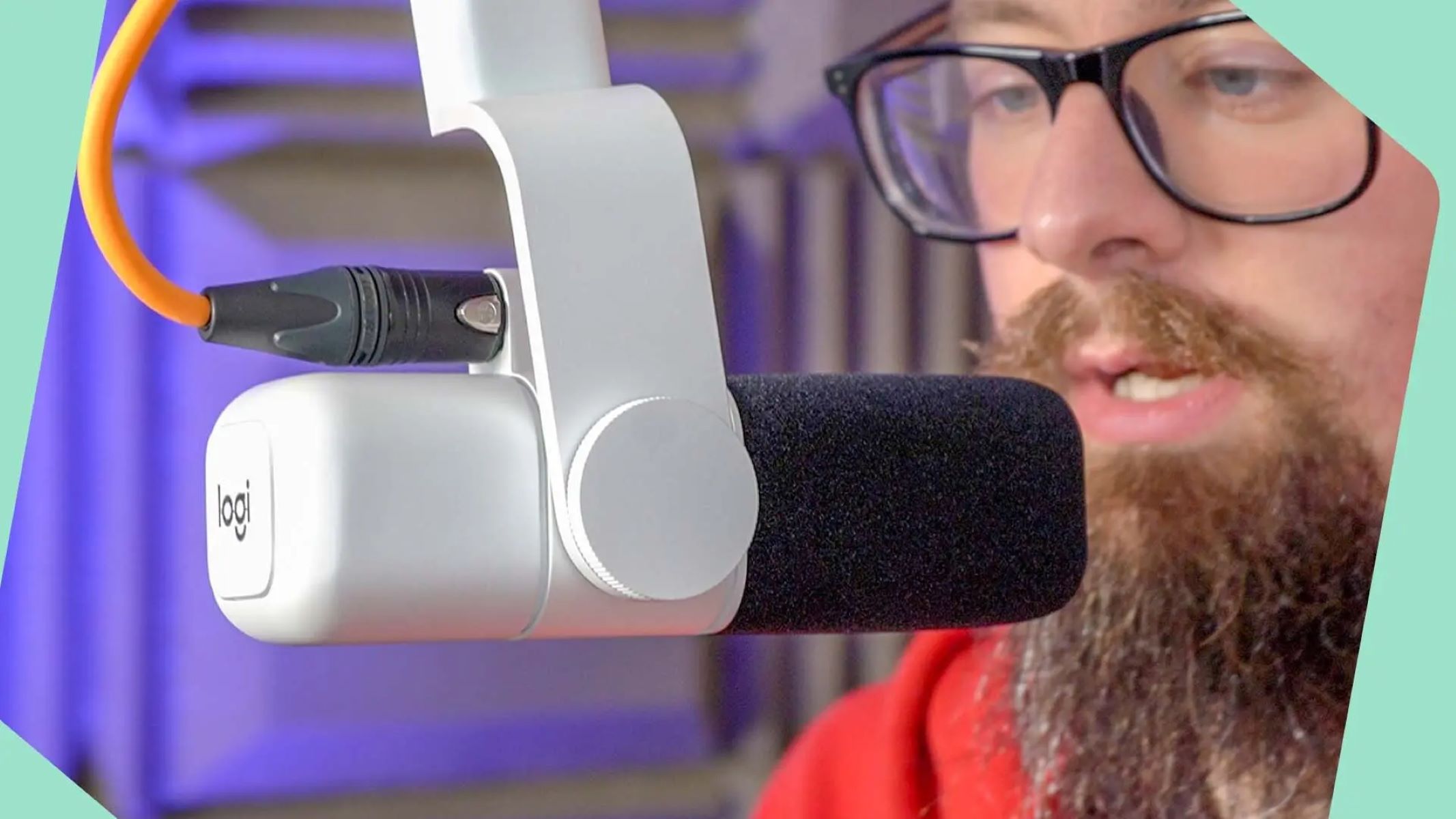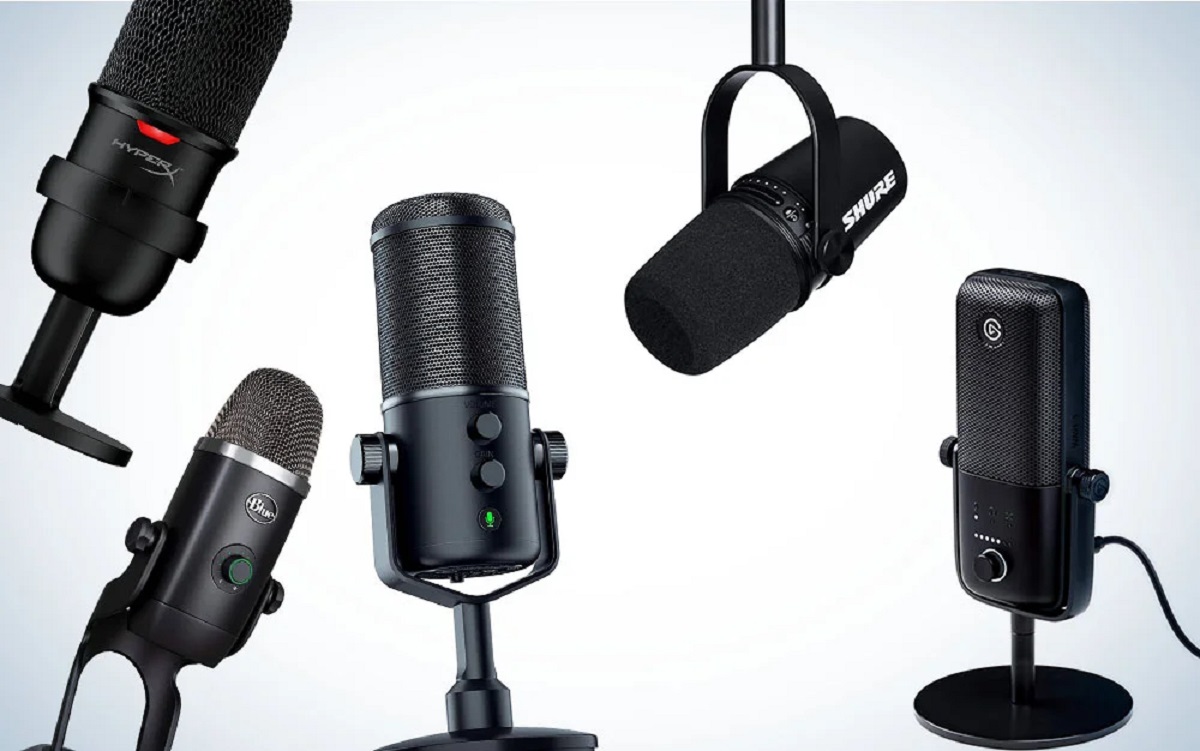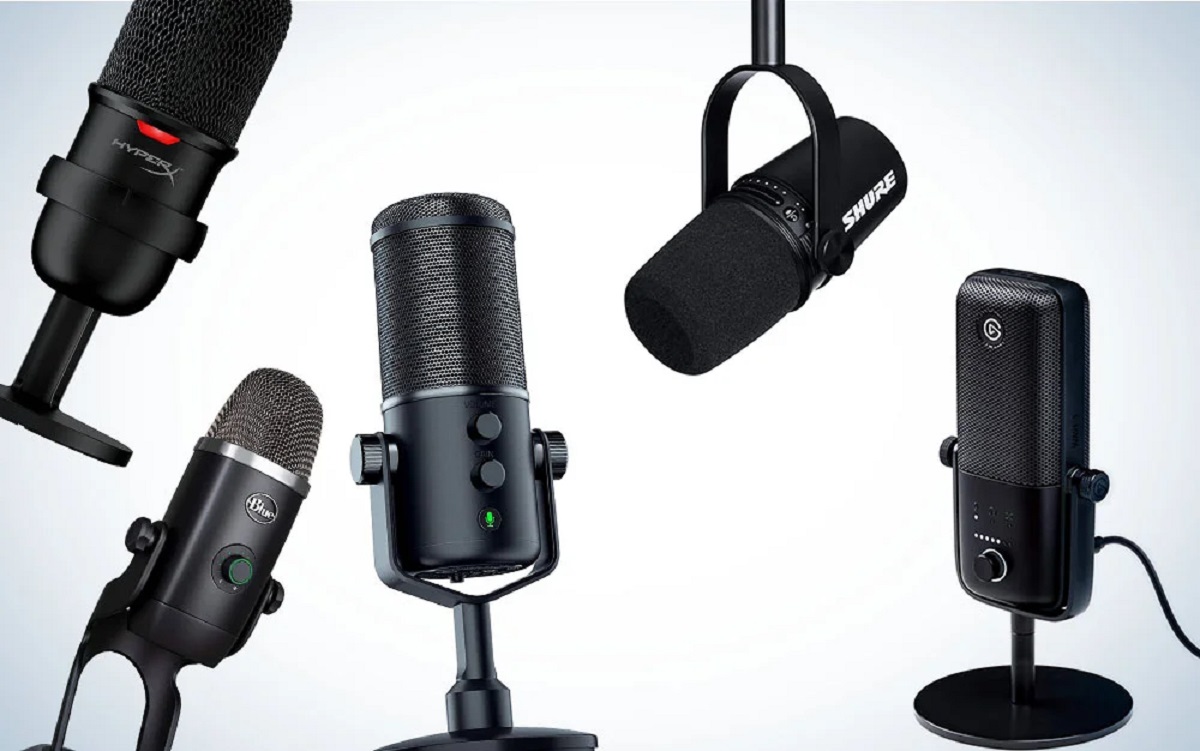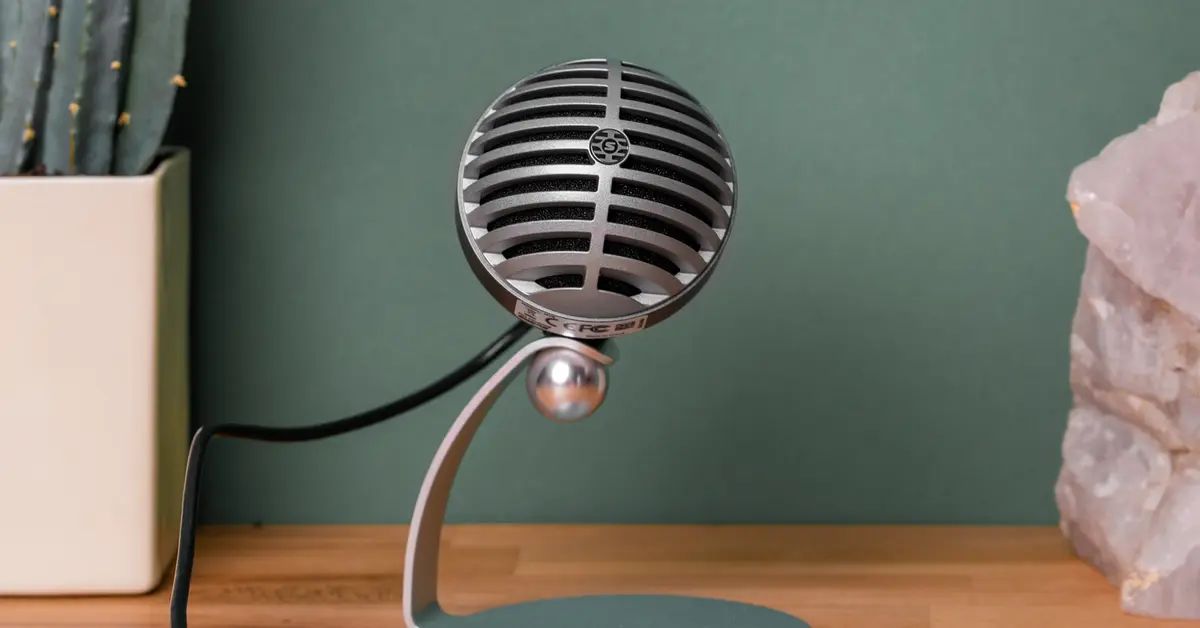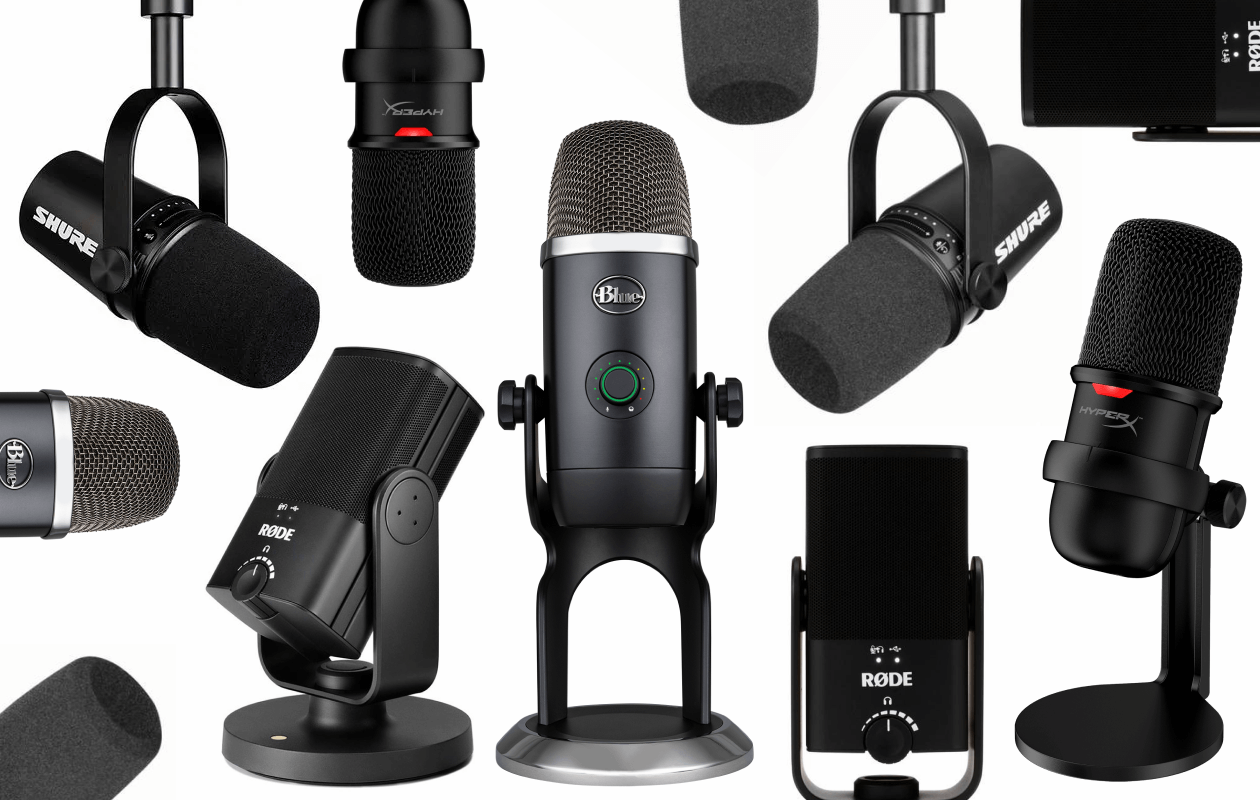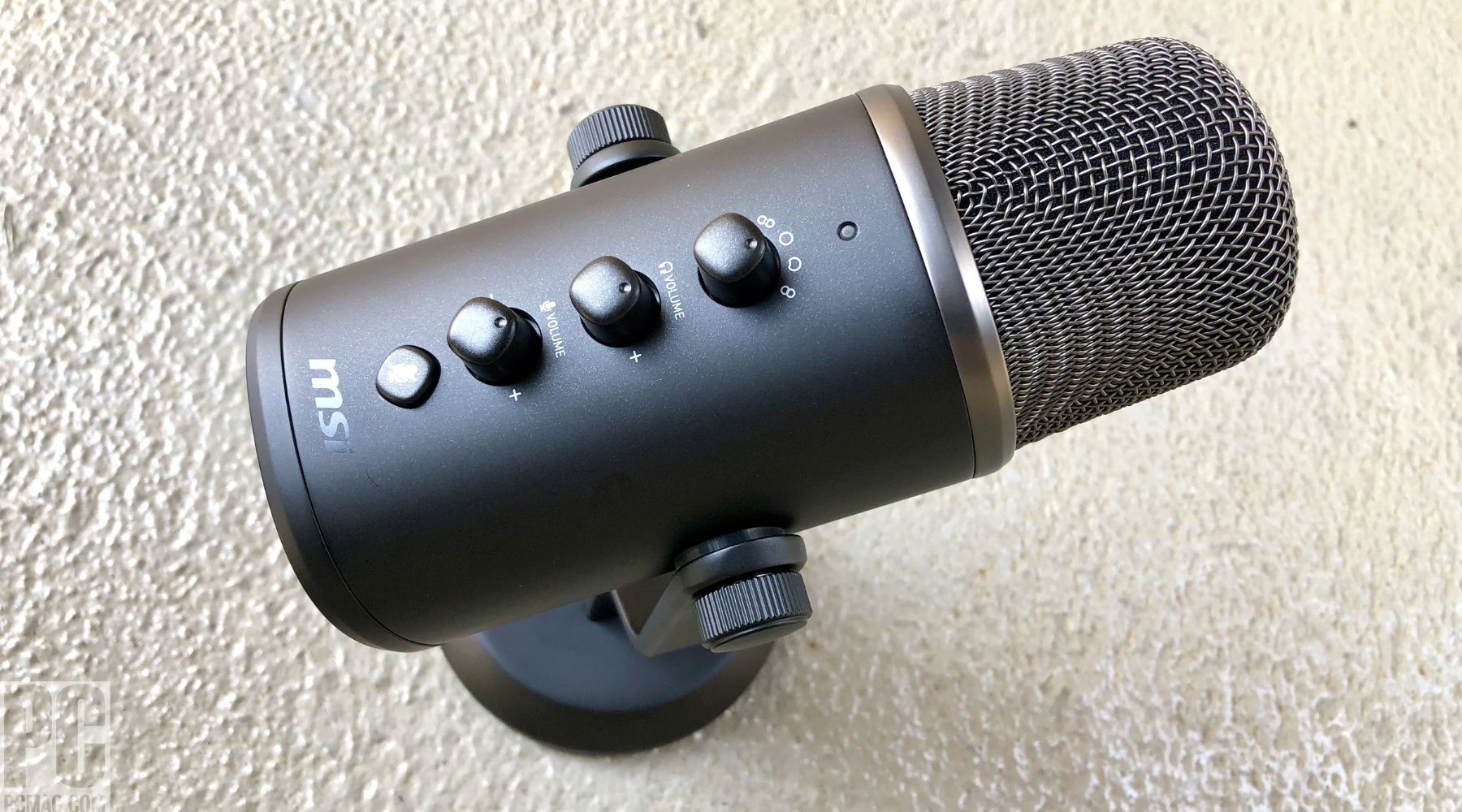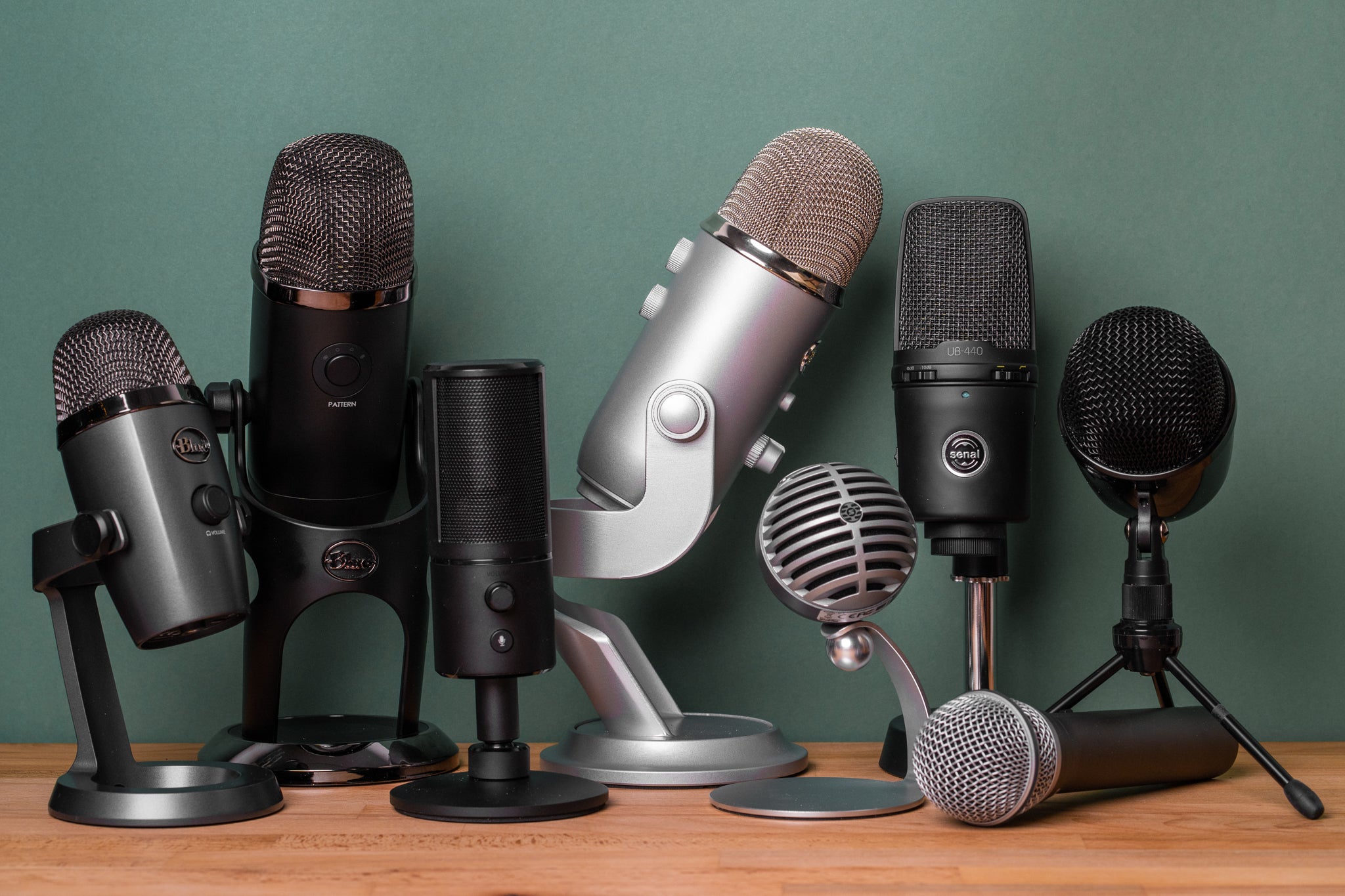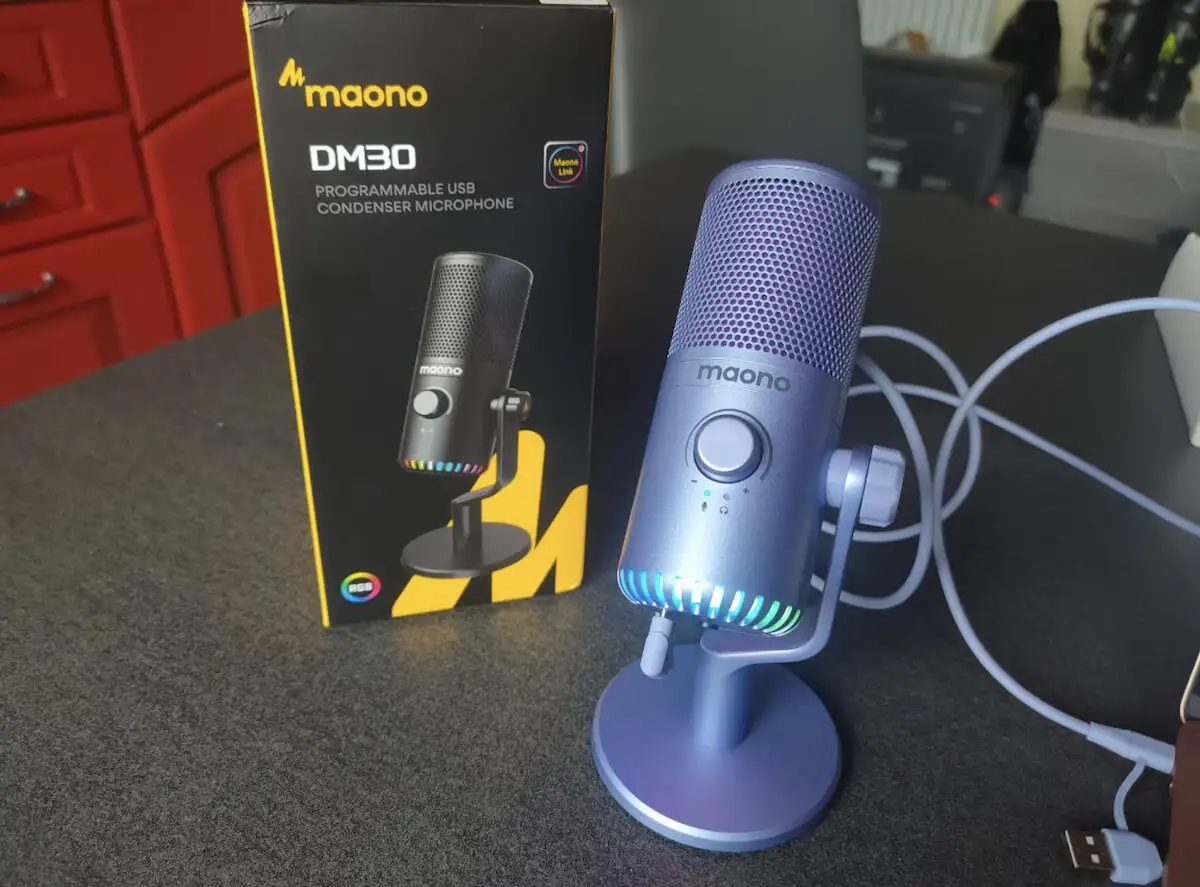Introduction
When it comes to creating content or engaging in virtual conversations, having a reliable desktop microphone is essential. Whether you're recording a podcast, participating in online meetings, or live streaming, a high-quality microphone is your gateway to clear and crisp audio. However, despite the advancements in technology, many users encounter frustrating issues with their desktop microphones. From muffled sound to background noise and erratic behavior, these problems can hinder the overall audio experience and disrupt communication.
In this comprehensive guide, we will delve into the common issues that plague desktop microphones and provide practical troubleshooting steps to help you resolve these challenges. By understanding the root causes of these problems and learning how to address them effectively, you can elevate the performance of your desktop microphone and enjoy seamless audio transmission.
So, whether you're a content creator, a remote worker, or a casual user looking to enhance your audio setup, this guide is tailored to equip you with the knowledge and skills needed to tackle mic issues head-on. Let's embark on this troubleshooting journey and unravel the mysteries behind desktop audio pickup problems, empowering you to harness the full potential of your microphone setup.
Common Mic Issues
Desktop microphones are invaluable tools for capturing clear and high-fidelity audio. However, they are susceptible to a range of common issues that can hinder their performance and disrupt the user experience. Understanding these prevalent challenges is crucial for effectively troubleshooting and resolving mic-related problems. Here are some of the most common issues encountered by desktop microphone users:
-
Background Noise: One of the most frustrating issues is the presence of unwanted background noise during audio capture. This can include static, buzzing, or humming sounds that detract from the clarity of the recorded audio.
-
Muffled Sound Quality: Users often encounter problems with muffled or indistinct sound quality when using their desktop microphones. This can make it difficult for listeners to understand the recorded audio, leading to a subpar user experience.
-
Erratic Behavior: Some desktop microphones exhibit erratic behavior, such as sudden volume fluctuations, intermittent audio dropout, or unexpected changes in audio quality. These unpredictable behaviors can be disruptive and challenging to diagnose.
-
Low Volume Output: Another common issue is the microphone producing low volume output, making the recorded audio barely audible. This can be particularly frustrating when trying to communicate clearly in virtual meetings or recording sessions.
-
Interference and Distortion: Interference from electronic devices or distortion in the recorded audio can significantly impact the overall audio quality, leading to a distorted and unpleasant listening experience.
Recognizing these common mic issues is the first step toward effectively troubleshooting and resolving them. By identifying the specific symptoms and understanding their underlying causes, users can take targeted steps to address these issues and restore their microphone's optimal performance.
Understanding these common mic issues is the first step to effectively troubleshooting and resolving them. By identifying the specific symptoms and understanding their underlying causes, users can take targeted steps to address these issues and restore their microphone's optimal performance.
Troubleshooting Steps
Resolving desktop microphone issues requires a systematic approach to identify and address the underlying causes. By following a series of troubleshooting steps, users can effectively diagnose and rectify common mic problems, restoring optimal audio performance. Here are the essential steps to troubleshoot and resolve desktop microphone issues:
Checking Hardware
-
Physical Inspection: Begin by inspecting the physical components of the microphone setup. Ensure that the microphone is securely connected to the appropriate port on the computer. Additionally, check for any visible damage to the microphone cable or connectors that could impede proper functionality.
-
Alternate Connection: If possible, try connecting the microphone to a different USB port or audio input on the computer. This can help determine if the issue is related to a specific port or connection point.
-
Testing with Another Device: To rule out potential hardware issues, test the microphone on another compatible device, such as a different computer or audio recording device. If the microphone functions properly on an alternate device, the problem may be related to the original computer's hardware or settings.
Adjusting Settings
-
Sound Settings: Access the sound settings on your computer and ensure that the microphone is selected as the default recording device. Adjust the input volume and microphone levels to optimize audio capture without causing distortion or background noise.
-
Noise Cancellation: Explore the available noise cancellation and audio enhancement settings on your computer or recording software. Enabling noise suppression features can help minimize background noise and improve the overall audio quality.
-
Microphone Placement: Experiment with the placement of the microphone to achieve the best sound capture. Position the microphone away from sources of interference, such as fans, air vents, or electronic devices, to reduce the likelihood of unwanted noise and distortion.
Updating Drivers
-
Driver Updates: Check for driver updates for your microphone and audio interface. Visit the manufacturer's website or use device management utilities to ensure that you have the latest drivers installed. Updated drivers can address compatibility issues and optimize the microphone's performance.
-
Driver Reinstallation: If you suspect that the current microphone drivers are causing issues, consider uninstalling and reinstalling the drivers to reset the configuration and resolve potential software conflicts.
By systematically following these troubleshooting steps, users can effectively identify and address common desktop microphone issues, restoring optimal audio quality and ensuring a seamless audio capture experience.
Checking Hardware
When troubleshooting desktop microphone issues, the first step involves a thorough examination of the hardware components to identify any potential sources of malfunction. By meticulously inspecting the physical aspects of the microphone setup, users can pinpoint and address hardware-related issues that may be impacting the microphone's performance.
Physical Inspection
Commence the hardware check by visually examining the microphone and its associated components. Ensure that the microphone is securely connected to the designated port on the computer or audio interface. It's essential to verify that the connection is snug to prevent any intermittent disconnection issues that could lead to audio dropouts or erratic behavior. Additionally, carefully inspect the microphone cable and connectors for any signs of wear, fraying, or damage that could compromise the integrity of the connection. Any visible damage to the cable or connectors should be addressed promptly to maintain optimal functionality.
Alternate Connection
To rule out potential port-related issues, consider connecting the microphone to an alternate USB port or audio input on the computer. This step is crucial in determining whether the problem is specific to a particular port or connection point. By testing the microphone across different ports, users can isolate the issue and identify whether it is related to a faulty port or a broader hardware malfunction.
Testing with Another Device
Another valuable troubleshooting approach involves testing the microphone on a different compatible device, such as a separate computer or audio recording device. This method helps ascertain whether the microphone functions correctly outside of the original setup, shedding light on potential hardware compatibility or configuration issues specific to the original computer. If the microphone performs as expected on an alternative device, it suggests that the issue may be rooted in the original computer's hardware or configuration, prompting further investigation into the specific system settings or compatibility issues.
By meticulously examining the hardware elements, conducting tests across different connection points, and validating the microphone's performance on alternative devices, users can effectively identify and address hardware-related issues that may be impacting the functionality of their desktop microphone. This systematic approach lays the groundwork for targeted troubleshooting and paves the way for a successful resolution of hardware-related mic issues.
Adjusting Settings
Fine-tuning the settings of your desktop microphone is a pivotal aspect of troubleshooting common audio pickup issues. By delving into the intricacies of sound configuration and microphone adjustments, users can significantly enhance the quality and reliability of their audio capture. Here's a detailed exploration of the essential steps involved in adjusting settings to optimize the performance of your desktop microphone:
Sound Settings
Navigate to the sound settings on your computer or recording software and ensure that the desktop microphone is designated as the default recording device. This fundamental step ensures that the system prioritizes the selected microphone for audio capture, preventing potential conflicts with other input devices. Once the microphone is set as the default recording device, fine-tune the input volume and microphone levels to achieve optimal audio capture without compromising clarity or introducing background noise. Balancing the input volume is crucial for capturing clear and distortion-free audio, while adjusting the microphone levels allows for precise control over the input sensitivity.
Noise Cancellation
Explore the available noise cancellation and audio enhancement settings within your computer's sound configuration or recording software. Many modern audio interfaces and recording applications offer built-in noise suppression features that can effectively minimize background noise and enhance the overall audio quality. Enabling these noise cancellation functionalities can significantly reduce unwanted ambient sounds, such as fan noise, air conditioning hum, or other environmental disturbances, resulting in cleaner and more professional-sounding audio recordings.
Microphone Placement
Experiment with the physical placement of the desktop microphone to optimize sound capture and minimize the impact of external interference. Position the microphone away from potential sources of interference, such as computer fans, air vents, or electronic devices emitting electromagnetic fields. By strategically placing the microphone in a conducive environment, users can mitigate the risk of unwanted noise and distortion, ensuring that the recorded audio maintains its clarity and fidelity. Additionally, adjusting the orientation and distance of the microphone relative to the sound source can further refine the audio pickup, allowing for precise and nuanced capture of vocal or ambient sounds.
By meticulously adjusting these settings and leveraging the available configuration options, users can fine-tune their desktop microphone to deliver exceptional audio quality and reliability. This proactive approach to sound optimization empowers users to overcome common mic issues and elevate their audio capture experience to new heights.
Updating Drivers
Ensuring that the drivers for your desktop microphone and audio interface are up to date is a critical aspect of troubleshooting and optimizing audio performance. By keeping the drivers current, users can address compatibility issues, enhance system stability, and unlock the full potential of their microphone setup. Here's an in-depth exploration of the essential steps involved in updating drivers to bolster the functionality and reliability of your desktop microphone:
Driver Updates
Commence the driver update process by checking for the latest drivers specifically tailored for your microphone and audio interface. Visit the official website of the microphone's manufacturer or the support page of the audio interface provider to access the most recent driver releases. These updates often include bug fixes, performance enhancements, and compatibility improvements that can directly impact the microphone's functionality and audio capture capabilities. By staying abreast of the latest driver versions, users can leverage the advancements and optimizations introduced by the manufacturers, ensuring a seamless and efficient audio recording experience.
Driver Reinstallation
In cases where the current microphone drivers exhibit signs of malfunction or software conflicts, consider uninstalling and reinstalling the drivers to reset the configuration and rectify potential issues. This process involves removing the existing drivers from the system, followed by a clean installation of the updated or alternative drivers. By effectively reinstalling the drivers, users can eliminate corrupted or outdated driver files, resolving common driver-related problems and establishing a fresh foundation for the microphone's functionality.
Driver Compatibility
When updating or reinstalling drivers, it's crucial to verify the compatibility of the selected drivers with your operating system and hardware configuration. Ensure that the updated drivers are explicitly designed for your operating system version, whether it's Windows, macOS, or Linux, to prevent compatibility conflicts and system instability. Additionally, confirm the compatibility of the drivers with your specific microphone model and audio interface to guarantee seamless integration and optimal performance.
By proactively updating and managing the drivers for your desktop microphone and audio interface, users can mitigate potential compatibility issues, optimize system stability, and unleash the full potential of their audio capture setup. This meticulous approach to driver maintenance forms a cornerstone of effective troubleshooting and ensures that the desktop microphone operates at its peak performance, delivering exceptional audio quality and reliability.
Conclusion
In the realm of desktop audio pickup, troubleshooting microphone issues is an essential skill that empowers users to overcome common challenges and unlock the full potential of their audio setup. By delving into the intricacies of hardware inspection, settings adjustment, and driver management, users can navigate the complexities of mic-related problems with confidence and precision.
Through a systematic approach to hardware inspection, users can identify and address potential physical malfunctions or connectivity issues that may impede the microphone's performance. By meticulously examining the cable integrity, connection points, and testing the microphone across different devices, users can isolate hardware-related problems and take targeted steps to rectify them.
Furthermore, the art of fine-tuning sound settings and optimizing microphone placement allows users to harness the full capabilities of their desktop microphone. By adjusting input volumes, leveraging noise cancellation features, and strategically positioning the microphone to minimize interference, users can elevate the quality and reliability of their audio capture, ensuring clear and professional-sounding recordings.
Additionally, staying vigilant about driver updates and compatibility is paramount in maintaining the seamless functionality of the desktop microphone. By regularly updating drivers and ensuring their compatibility with the operating system and hardware, users can address potential software conflicts, enhance system stability, and capitalize on the advancements introduced by the manufacturers.
In conclusion, mastering the art of troubleshooting desktop microphone issues empowers users to conquer common audio pickup challenges and elevate their audio capture experience. By embracing a proactive and systematic approach to problem-solving, users can transform their desktop microphone into a reliable and high-performing tool for content creation, communication, and immersive audio experiences. With the knowledge and skills gained from this comprehensive guide, users are equipped to navigate the intricacies of desktop audio pickup with confidence, ensuring that their microphone setup delivers exceptional audio quality and reliability in any endeavor.







